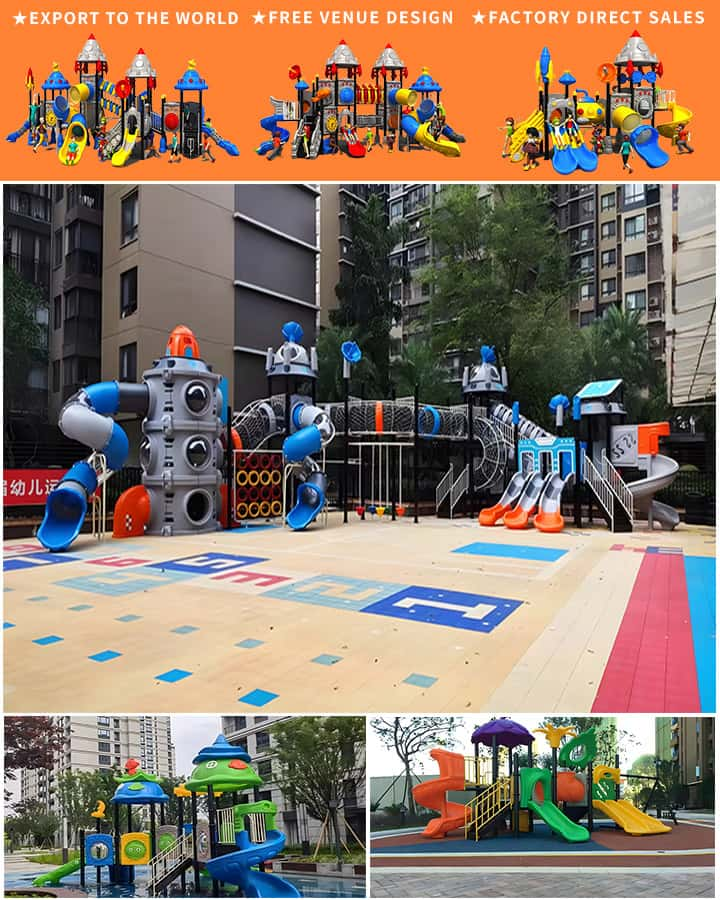In the ever-evolving landscape of educational development, school playgrounds remain a critical yet often underfunded aspect. Integral to both physical education and the social growth of students, well-equipped playgrounds are essential for fostering an environment where children can thrive. Securing grants for playground equipment is an effective strategy for schools facing budget constraints. This article delves into the nuances of obtaining funding through various grant opportunities, offering a roadmap to equip schools with the necessary resources for their students’ well-being.
Understanding the Importance of Playground Equipment
Playground equipment serves more than just a recreational purpose; it is a crucial component in the holistic development of children. From physical fitness and motor skills to social interaction and emotional health, playgrounds provide a space for diverse activities that contribute to overall well-being. However, maintaining and upgrading such facilities can be a significant financial burden for educational institutions. Herein lies the significance of seeking external funding through grants dedicated to enhancing school infrastructure.
Identifying Potential Grant Sources
Several organizations and government bodies offer grants specifically aimed at improving school playgrounds. Understanding where to look and what each grant entails is the first step in securing funding. Some notable sources include:
Federal Grants: Programs like the Department of Education’s School Facilities Program or the Community Development Block Grants may provide funding for playground improvements, particularly in economically disadvantaged areas.
State Grants: Many states have their own programs designed to enhance school infrastructure, including playground equipment. These grants often require matching funds, so collaboration with local entities can be beneficial.
Local Community Foundations: Community foundations frequently support initiatives that benefit local schools. They are often more flexible in their funding criteria and can be a valuable resource for smaller projects.
Private Foundations and Corporations: Numerous private organizations and corporate entities offer grants focused on education and children’s welfare. Examples include the Gates Foundation or companies with strong community engagement strategies.

Crafting a Winning Grant Proposal
A successful grant proposal requires meticulous planning and clear articulation of needs and benefits. Here are key elements to consider:
Needs Assessment: Clearly outline why new or upgraded playground equipment is necessary. Include data on current conditions and how they impede student activities.
Benefits: Highlight the positive impact this improvement will have on students’ physical health, social skills, and academic performance. Use testimonials from teachers, parents, and even students if possible.
Budget Planning: Provide a detailed budget, including quotes for equipment, installation costs, and any additional expenses. Ensure transparency to build trust with grantors.
Sustainability Plan: Demonstrate how you will maintain the equipment long-term, ensuring the investment continues to benefit future students.
Alignment with Grantor’s Goals: Tailor your proposal to align with the specific mission and goals of the grant-providing organization. Show them how your project furthers their objectives.
Application Process and Follow-Up
Each grant program has its application process, which typically involves submitting a detailed proposal, adhering to deadlines, and providing supplementary materials such as letters of support and detailed plans. Stay organized by keeping track of all required documents and correspondence dates.
Additionally, follow up with the grant provider after submission to confirm receipt and address any potential questions. Persistence and professional communication can make a significant difference in the approval process.
Conclusion
Securing grants for school playground equipment is a strategic approach to overcoming budget limitations and ensuring students have access to safe, stimulating play environments. By understanding the available funding sources and crafting compelling proposals, educators can successfully navigate the grant application process and secure the resources needed to enhance their playgrounds. With well-equipped playgrounds, schools can provide enriched physical and social experiences, contributing significantly to the comprehensive development of their students.




